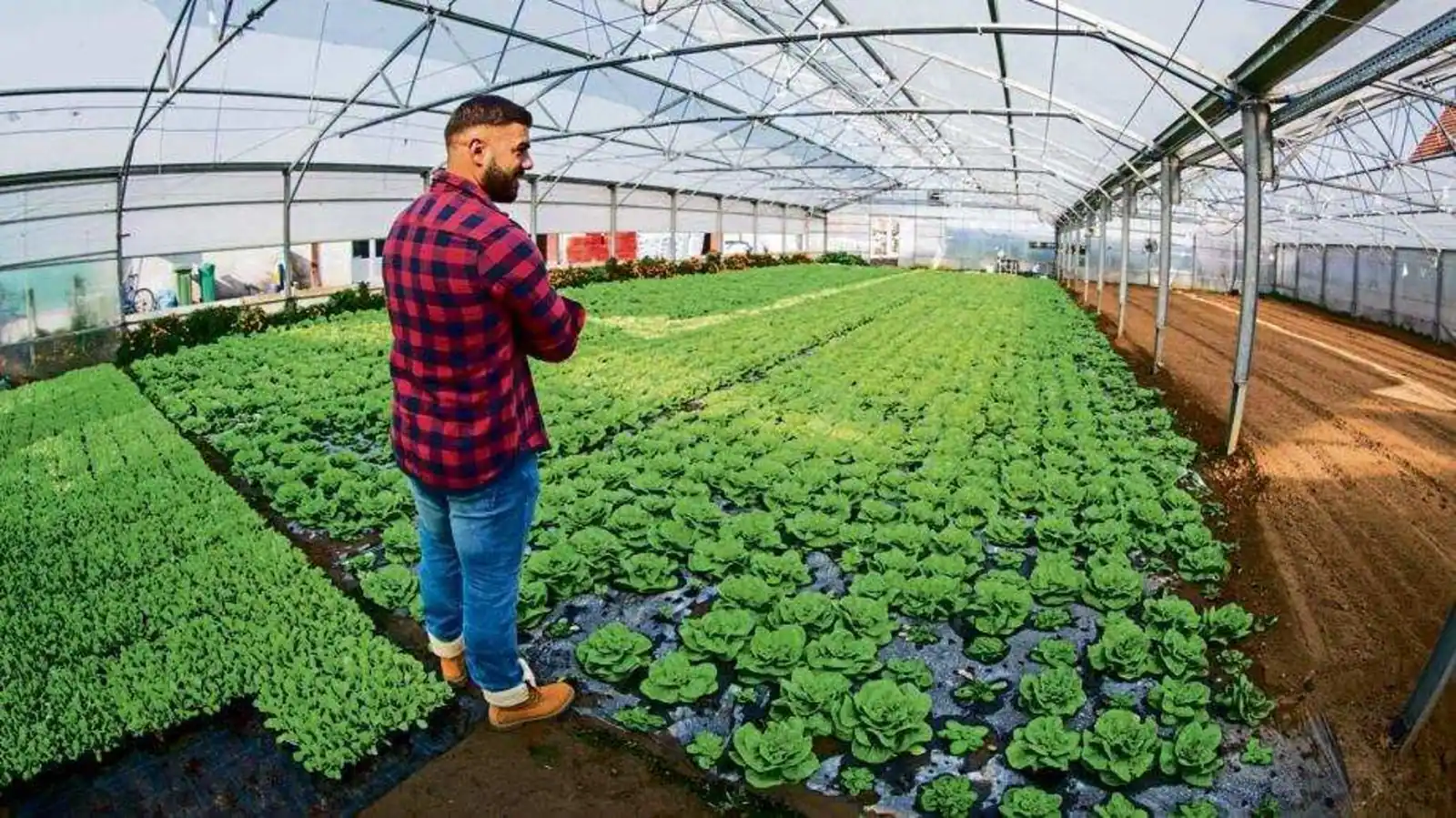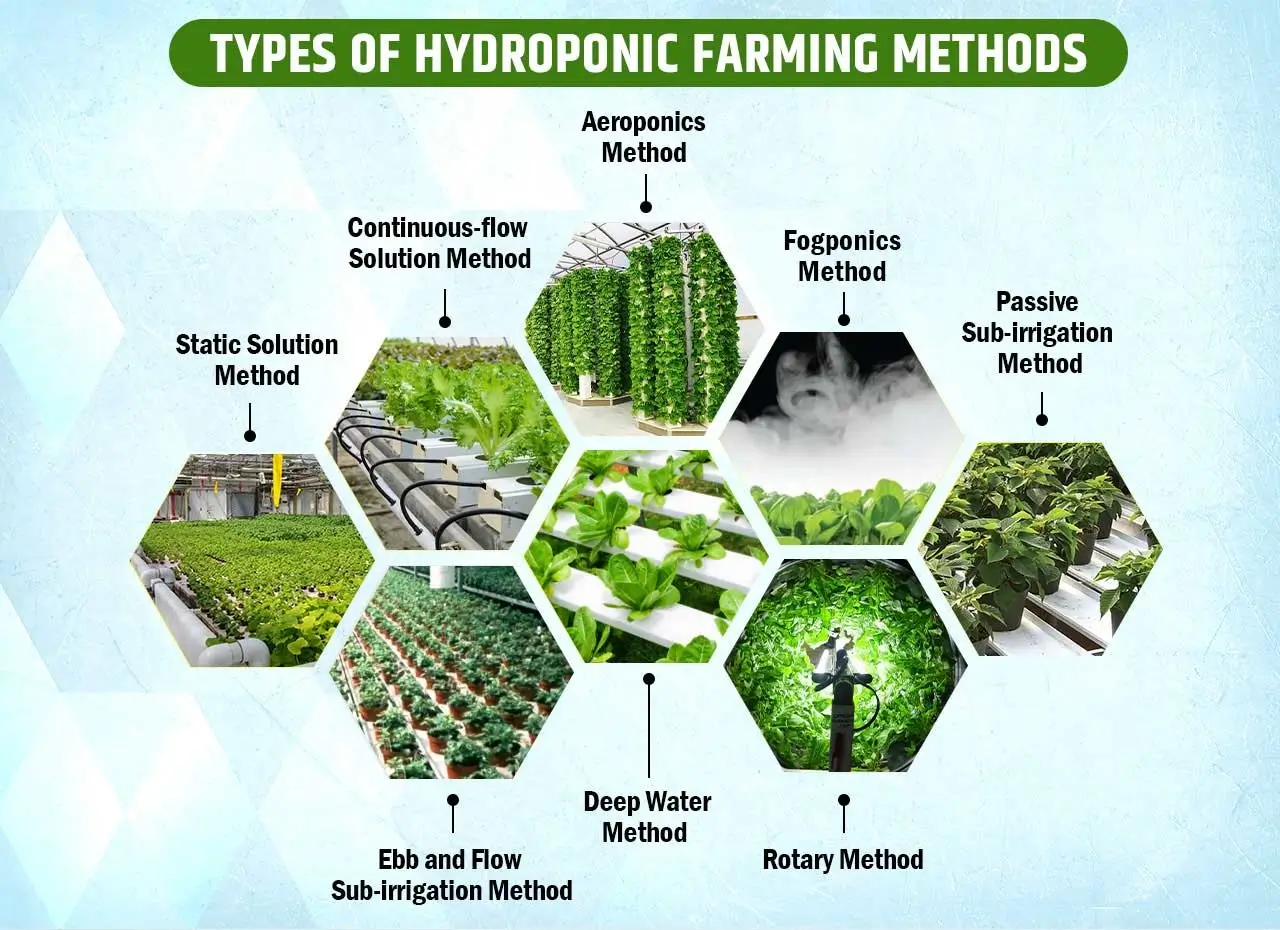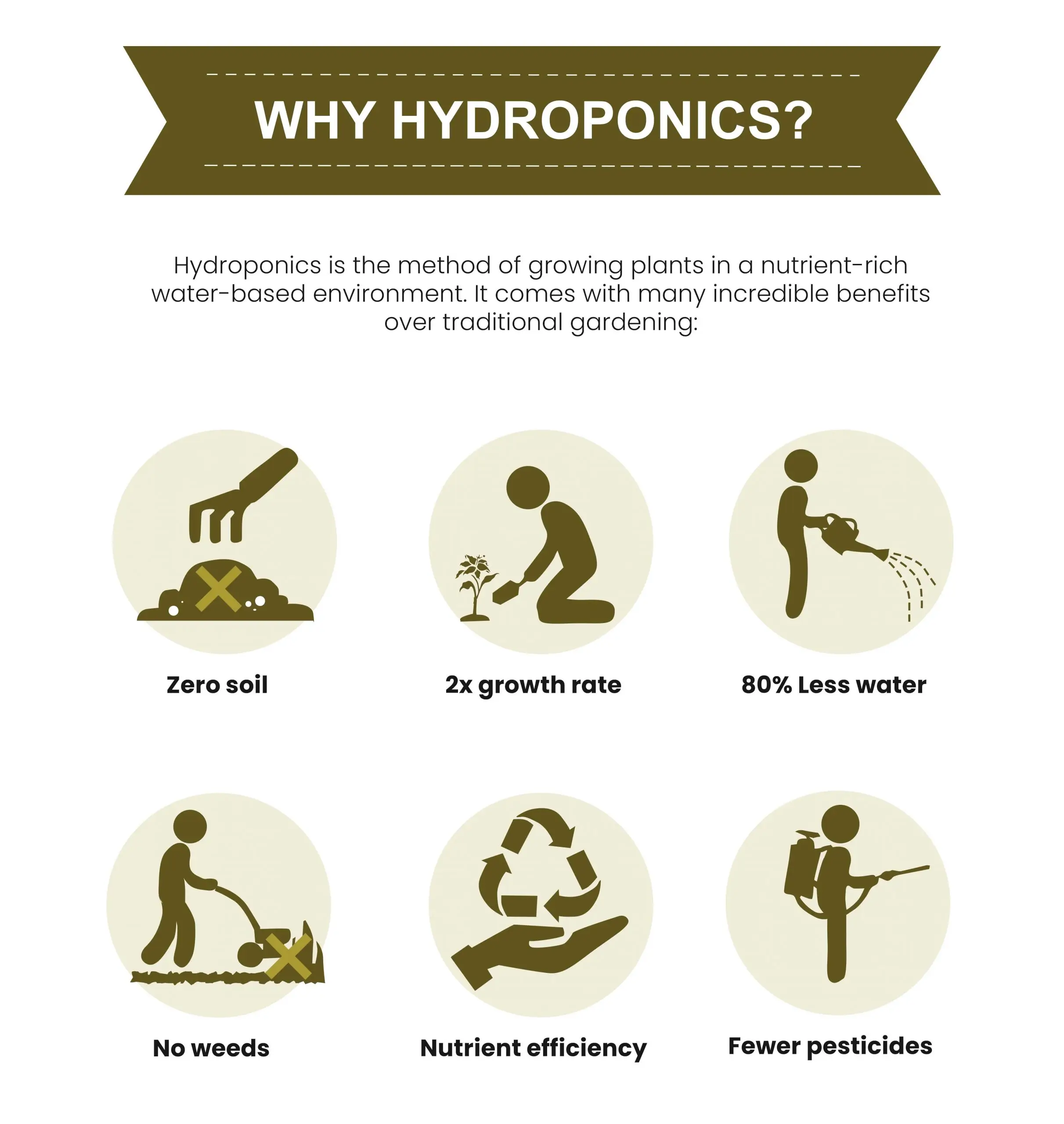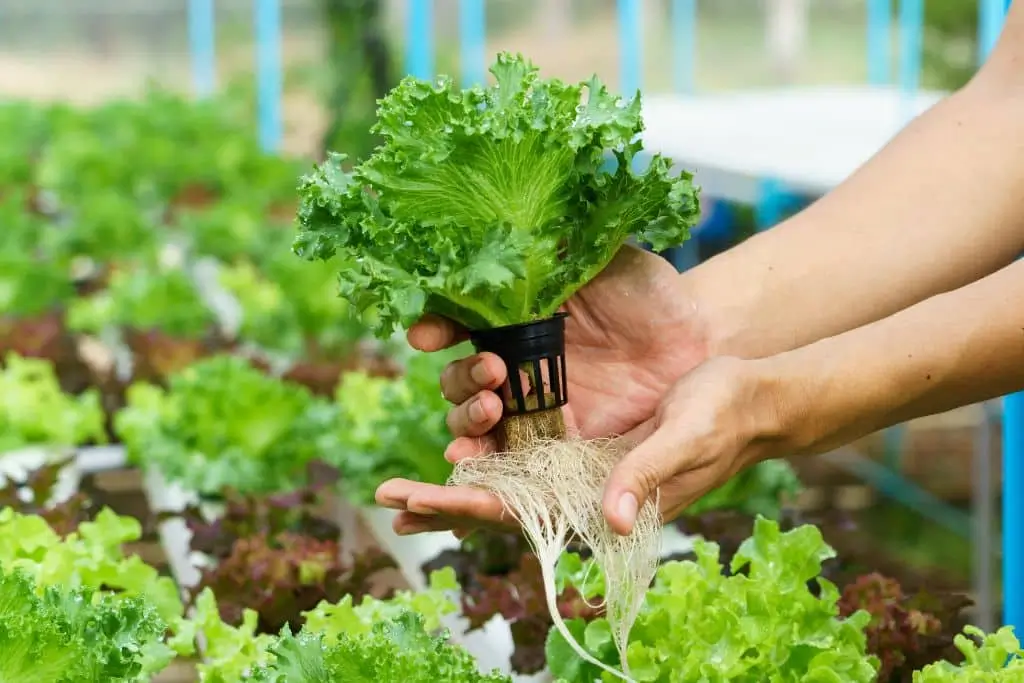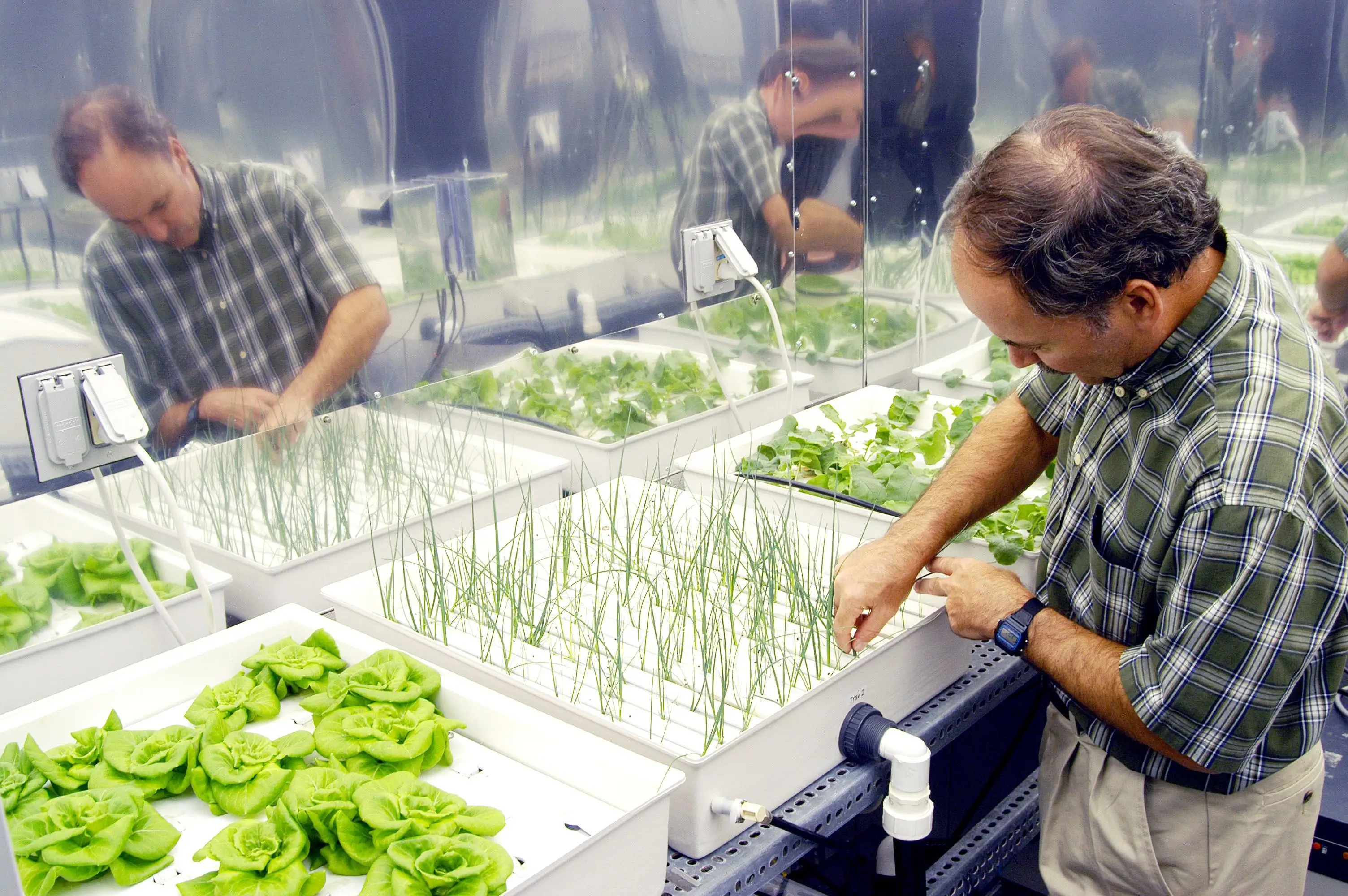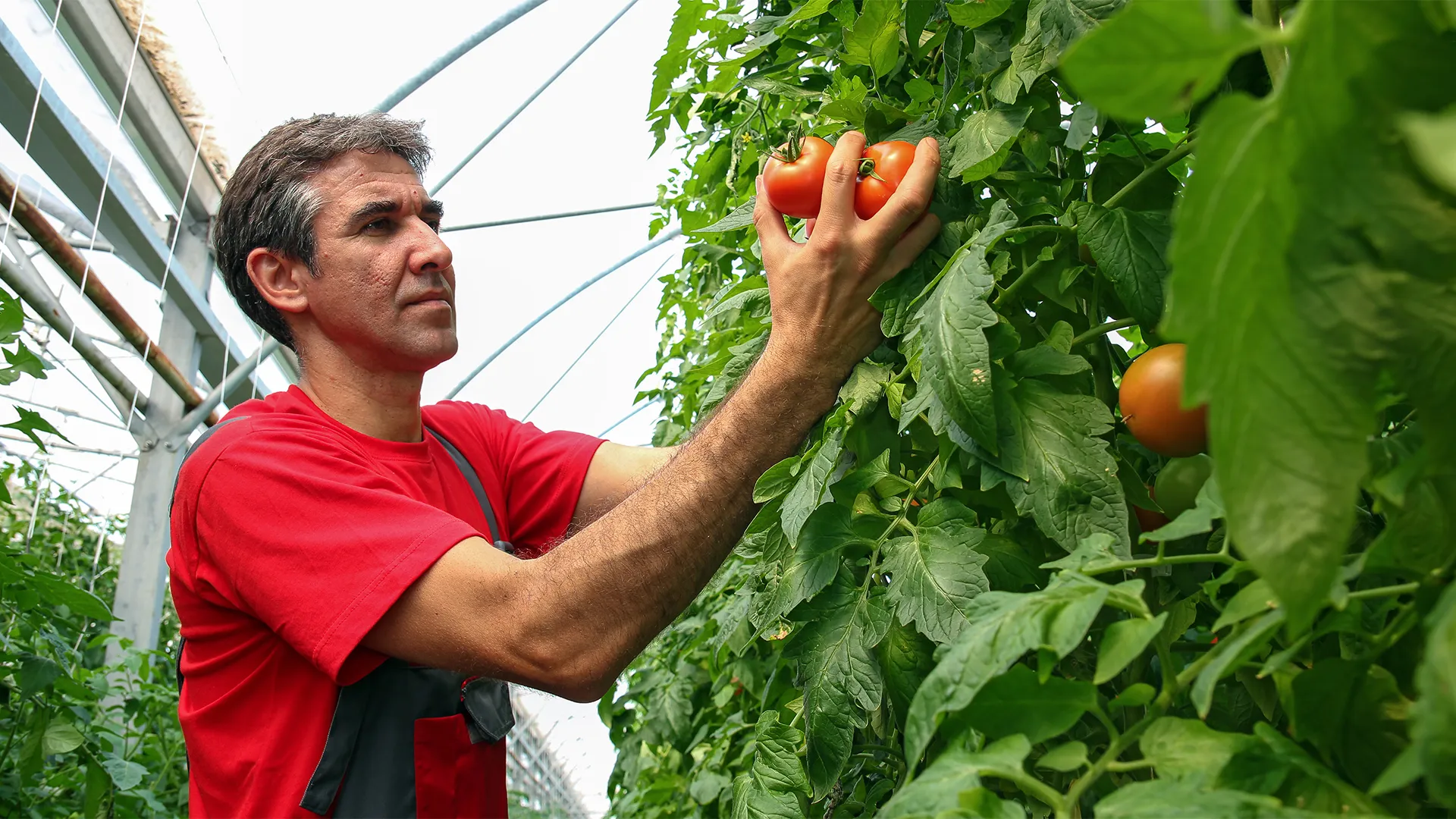
The United Indian

In times where traditional farming methods are increasingly challenged by factors such as soil degradation, water scarcity, and climate change, hydroponic farming has emerged as a promising solution. India, a country with a rich agricultural heritage, is witnessing a growing interest in this innovative technique. In this blog post, we will explore the world of hydroponic farming in India, its pros and cons, its future in India, and how you can start your own hydroponic garden at home.
What is Hydroponic Farming?
Hydroponic vertical Farming is a method of growing plants without soil by using mineral nutrient solutions in an aqueous solvent. The term hydroponics is derived from the Greek words "hydro" (water) and "ponos" (labor). This innovative technique allows plants to grow with their roots exposed directly to the nutrient-rich water, leading to faster growth rates and higher yields compared to traditional soil-based agriculture.
Hydroponic systems can vary widely in complexity, from simple setups like a water-filled container with nutrients to sophisticated systems involving pumps, timers, and artificial lighting. The primary types of hydroponics vertical farming include nutrient film technique (NFT), deep water culture (DWC), aeroponics, and drip systems.
Unlike traditional farming, where plants are grown in soil, hydroponics relies on a carefully controlled environment to provide the necessary nutrients, water, and oxygen to the plants. This technique has gained popularity due to its ability to produce higher yields, conserve water, and reduce the risk of soil-borne diseases.
Different Types of Hydroponic Systems
Hydroponic farming isn't a one-size-fits-all method. There are several systems to choose from, each with its own unique advantages:
- Nutrient Film Technique (NFT): Plants are placed in a shallow stream of nutrient-rich water that flows continuously over the roots.
- Deep Water Culture (DWC): Plants are suspended in nutrient-rich water, with roots submerged directly in the solution.
- Aeroponics: In this type of hydroponics vertical farming, roots are misted with a nutrient solution while being suspended in the air.
- Wick System: A passive system where nutrients are drawn into the growing medium from a reservoir using a wick.
- Ebb and Flow System: Nutrient solution floods the grow bed at intervals and then drains back into the reservoir.
- Drip System: Nutrient solution is dripped directly onto the root zone of each plant.
Advantages of Hydroponic Farming
- Water Efficiency: Hydroponic systems use up to 90% less water than traditional farming methods, as the water is continuously recycled and reused. The closed-loop systems recycle water, minimizing wastage and making it an ideal solution for water-scarce regions.
- Higher Yields : Plants grown hydroponically often produce higher yields due to the optimized nutrient delivery and controlled environment.
- Year-Round Production: Hydroponic systems can be set up indoors, allowing for year-round production, regardless of weather conditions. This can lead to multiple harvests in a year.
- Space Efficiency : Hydroponics allows for vertical farming, making it possible to grow a large number of plants in a limited space. This is one of the biggest advantages of hydroponic farming and is particularly beneficial in urban areas where land is scarce and expensive.
- Pest and Disease Control: Since hydroponic systems are typically enclosed, they are less susceptible to pests and soil-borne diseases. This reduces the need for pesticides and herbicides, leading to healthier produce.
- Controlled Environment: Hydroponics can be practiced indoors, allowing for a controlled environment where factors such as light, temperature, and humidity can be optimized for plant growth. This eliminates the dependency on seasonal changes and climatic conditions.
Cons of Hydroponic Farming
- Initial Investment: Setting up a hydroponic system requires an initial investment in equipment like pumps, timers, and nutrient solutions. This can be a bit costly hence a barrier for small-scale farmers with limited resources.
- Electricity Dependence: Hydroponic farming in India relies heavily on electricity for lighting, water pumps, and environmental controls. Consistent power supply is crucial, and outages can disrupt plant growth.
- Nutrient Management: Maintaining the correct nutrient balance in the water solution can be challenging and requires constant monitoring.
- Technical Knowledge: Operating and maintaining a hydroponic system requires specialized knowledge and training of plant science, nutrient management, and system maintenance. A learning curve exists for those unfamiliar with the technology.
- Limited Crop Selection: While many vegetables and herbs thrive in hydroponic systems, not all crops are suitable for this method. Grains and root vegetables with complex root structures generally don't do well.
The Future of Hydroponic Farming in India
India's growing population and urbanization have put immense pressure on traditional agricultural practices. Hydroponic farming offers a viable solution to address these challenges. With its water-efficient and space-saving qualities, hydroponic farming in India can help meet the increasing demand for fresh produce in urban areas.
The Indian government has recognized the potential of hydroponics and has taken steps to promote its adoption. Several initiatives, such as the Pradhan Mantri Krishi Sinchayee Yojana (PMKSY), have been launched to encourage the adoption of modern irrigation techniques, including hydroponics.
Additionally, the rise of urban farming and the increasing awareness of sustainable agriculture practices have further fueled the interest in hydroponic farming in India. Many startups and entrepreneurs are exploring innovative hydroponic solutions tailored to the Indian climate and market.
Hydroponic Farming at Home
While commercial hydroponic systems can be complex and expensive but the advantages of hydroponic farming are worth a shot. Hence do not wait and start your own small-scale hydroponic garden at home. Here's how:
- Choose a Hydroponic System: There are various types of hydroponic systems, such as the Nutrient Film Technique (NFT), Deep Water Culture (DWC), and Ebb and Flow systems. Each system has its own advantages and suitability for different types of plants.
- Set up the System: Follow the instructions provided with your chosen hydroponic system to set it up correctly. This may involve assembling the growing trays, installing the water pump, and setting up the nutrient solution reservoir.
- Select Your Plants: While numerous vegetables and herbs can be grown with the help of hydroponic farming in India. However, some of the most popular choices for home gardens include lettuce, tomatoes, peppers, and herbs like basil and mint.
- Manage the Nutrient Solution: Regularly monitor and adjust the nutrient solution to maintain the correct pH and nutrient levels. Follow the manufacturer's recommendations or consult a hydroponic expert for guidance.
- Provide Adequate Lighting: Plants grown hydroponically may require supplemental lighting, especially if grown indoors. LED grow lights are a popular choice for home hydroponic setups.
- Monitor and Maintain: Keep an eye on the plants' growth and health, and address any issues promptly. Regular maintenance, such as cleaning the system and replacing the nutrient solution, is essential for a successful hydroponic garden.
Conclusion
Hydroponics offers a glimpse into the future of sustainable agriculture in India. Hydroponic farming in India has immense potential to revolutionize agriculture and address the challenges of food security, water scarcity, and urbanization. While it may require an initial investment and specialized knowledge, the benefits of higher yields, water efficiency, and year-round production make it an attractive option for both commercial and home growers. As technology advances and awareness grows, we can expect to see more innovative hydroponic solutions tailored to the Indian market, paving the way for a sustainable and efficient future in agriculture.
Read more in Environment
Oct 22, 2024
TUI Staff
Sep 10, 2024
TUI Staff

Stay Tuned with The United Indian!
Our news blog is dedicated to sharing valuable and pertinent content for Indian citizens. Our blog news covering a wide range of categories including technology, environment, government & economy ensures that you stay informed about the topics that matter most. Follow The United Indian to never miss out on the latest trending news in India.
©The United Indian 2024






